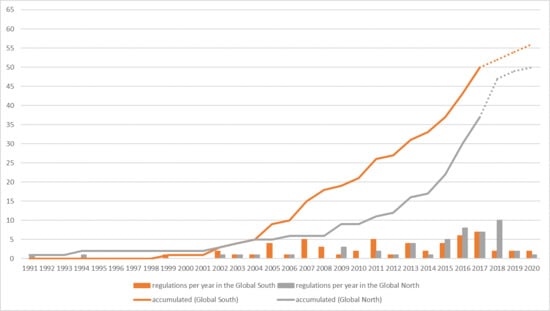Developing Countries in the Lead—What Drives the Diffusion of Plastic Bag Policies?
Abstract
1. Introduction
2. Materials and Methods
- Step 1: Identify potentially relevant variables;
- Step 2: Collect and analyze data in order to classify the influential character of the relevant variables;
- Step 3: Discuss the explanatory power of the variables;
- Step 4: Develop hypotheses.
- Characteristics of the international system or context;
- ⚬
- global problem pressure (Problem pressure is understood here as the “seriousness of an issue.” Its operationalization varies between different policy fields. Environmental quality indicators, social and economic indicators are frequently used [47].) (plastic production) & global public pressure (Public pressure is the intersubjective pressure of the (political) public on politicians that can be measured. For a detailed discussion of the term, see [48].) (press coverage; campaigns by non-governmental organizations (NGOs));
- ⚬
- international political agenda.
- Characteristics of potential adopter countries;
- ⚬
- (national) industry lobby groups (e.g., PlasticsEurope, American Chemistry Council);
- ⚬
- national problem pressure (recycling rates, waste collection rates).
- Characteristics of the innovation itself.
- ⚬
- complexity of political problem;
- ⚬
- political feasibility;
- ⚬
- technical feasibility.
3. Results
3.1. Characteristics of the International System or the Context
3.1.1. Global Problem Pressure and Global Public Pressure
3.1.2. International Political Agenda
3.2. Characteristics of Potential Adopter Countries
3.2.1. National Industry Lobby Groups
3.2.2. National Problem Pressure (Recycling Rates, Waste Collection Rates)
3.3. Characteristics of the Innovation Itself
4. Discussion
- the spread of plastic bag policies did in fact follow a diffusion curve;
- different to other diffusion processes, developing countries did not follow the example of typical Western pioneer countries;
- this applies not only to the time of adoption but also to the type of policy adopted.
Author Contributions
Acknowledgments
Conflicts of Interest
Appendix A
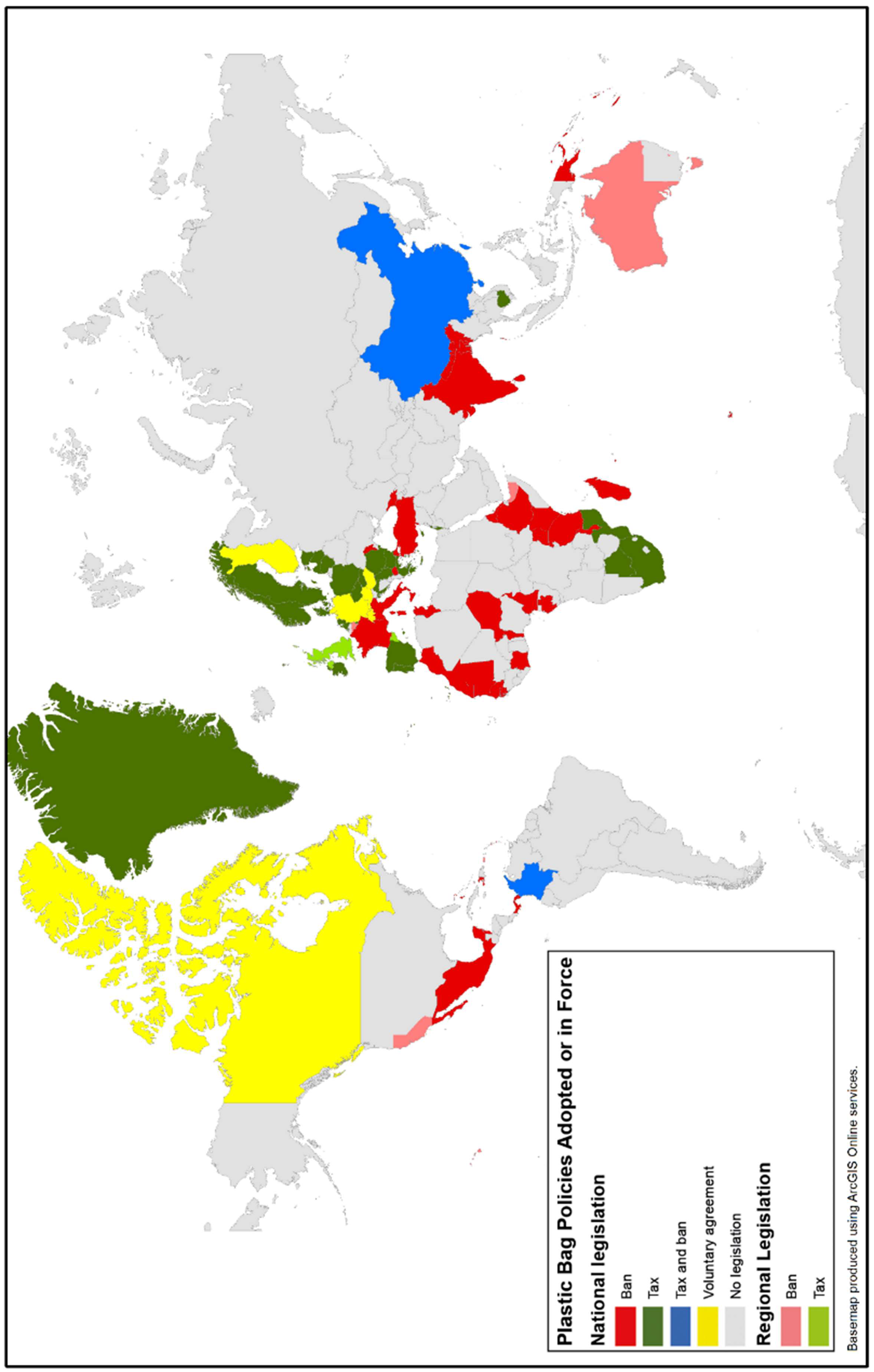
| Year | Country | Type of Policy | Global North (N)/Global South (S) |
|---|---|---|---|
| 1991 | Germany | tax | N |
| 1994 | Denmark | tax | N |
| 1999 | Bhutan | ban | S |
| 2002 | Bangladesh | ban | S |
| 2002 | Ireland | tax | N |
| 2002 | India | ban | S |
| 2003 | South Africa | tax | S |
| 2003 | Taiwan | ban | N |
| 2004 | Rwanda | ban (plastic bags banned from shops) | S |
| 2004 | Luxemburg | voluntary agreement | N |
| 2005 | Eritrea | ban | S |
| 2005 | India | ban (including thicker bags) | S |
| 2005 | Somaliland | ban | S |
| 2005 | Bhutan | ban (reinforced due to ineffectiveness) | S |
| 2006 | Tanzania | ban | S |
| 2006 | Romania | tax | N |
| 2007 | Kenya | ban (manufacture and import) | S |
| 2007 | Kenya | tax (on other bags) | S |
| 2007 | Uganda | ban (plastic bags < 30 μm) | S |
| 2007 | Uganda | tax (for bags > 39 µm) | S |
| 2007 | Botswana | tax | S |
| 2008 | Rwanda | ban (plastic bans banned completely) | S |
| 2008 | China | tax | S |
| 2008 | China | ban | S |
| 2009 | Macedonia | tax | S |
| 2009 | Hong Kong | tax (for supermarkets and retail outlets) | N |
| 2009 | South Australia | ban | N |
| 2009 | Malta | tax | N |
| 2010 | Gabon | ban | S |
| 2010 | Mexico | ban | S |
| 2011 | Australia Capitol Territory, Norther Territory | ban | N |
| 2011 | Republic of Congo | ban | S |
| 2011 | Kenya | ban (renewed ban on manufacture and import for thicker bags, due to former ineffectiveness) | S |
| 2011 | Kenya | tax (on other bags) | S |
| 2011 | Malaysia, state of Penang | tax | S |
| 2011 | Wales | tax | N |
| 2011 | Ethiopia | Ban (import and manufacture of single use plastic bags) | S |
| 2012 | Bulgaria | tax | N |
| 2012 | Serbia | tax | S |
| 2013 | Tasmania | ban | N |
| 2013 | Uganda | ban (extended to manufacturing and use of most plastic bags) | S |
| 2013 | Italy | ban | N |
| 2013 | Mauritania | ban | S |
| 2013 | Macedonia | ban | S |
| 2013 | Niger | ban | S |
| 2013 | Northern Ireland | tax | N |
| 2013 | Haiti | ban | S |
| 2014 | Scotland | tax | N |
| 2014 | Cameroon | ban | S |
| 2014 | Ivory Coast | ban | S |
| 2015 | England | tax | N |
| 2015 | Hawaii | ban | N |
| 2015 | Hong Kong | tax (levy widened to all retailers) | N |
| 2015 | Gambia | ban | S |
| 2015 | Madagascar | ban | S |
| 2015 | Senegal | ban | S |
| 2015 | Malawi | ban | S |
| 2015 | Portugal | tax | N |
| 2016 | Canada | voluntary agreement | N |
| 2016 | California | ban | N |
| 2016 | Netherlands | tax | N |
| 2016 | Puerto Rico | ban | N |
| 2016 | Morocco | ban | S |
| 2016 | Papua New Guinea | ban | S |
| 2016 | Mozambique | tax | S |
| 2016 | India | Ban (including thicker bags) | S |
| 2016 | Guinea-Bissau | ban | S |
| 2016 | France | ban | N |
| 2016 | Nepal | ban | S |
| 2016 | Germany | voluntary agreement (due to EU legislation) | N |
| 2016 | Finland | voluntary agreement | N |
| 2016 | Antigua and Barbuda | ban | S |
| 2017 | Israel | tax | N |
| 2017 | Kenya | ban (regarding use, manufacture and importation of plastic bags) | S |
| 2017 | Benin | ban | S |
| 2017 | Sri Lanka | ban | S |
| 2017 | Tunisia | ban | S |
| 2017 | Estonia | tax | N |
| 2017 | Georgia | ban | S |
| 2017 | Austria | voluntary agreement | N |
| 2017 | Catalonia | tax | N |
| 2017 | Norway | tax | N |
| 2017 | Switzerland | voluntary agreement | N |
| 2017 | Colombia | tax | S |
| 2017 | Colombia | ban | S |
| 2017 | Moldova | ban | S |
| 2018 | Wallonia, Brussels | ban | N |
| 2018 | Cyprus | tax | N |
| 2018 | Czech Republic | tax | N |
| 2018 | Poland | tax | N |
| 2018 | Greece | tax | N |
| 2018 | Lithuania | tax | N |
| 2018 | Luxemburg | tax | N |
| 2018 | Slovakia | tax | N |
| 2018 | Panama | ban | S |
| 2018 | Australia | ban | N |
| 2018 | Vanuatu | ban | S |
| 2018 | Spain | tax | N |
| 2019 | Turkey | ban | S |
| 2019 | Croatia | tax | N |
| 2019 | Latvia | tax | N |
| 2019 | Belize | ban | S |
| 2020 | Ethiopia | ban (on plastic bags use) | S |
| 2020 | Cambodia | tax | S |
| 2020 | Bahamas | ban | N |
| n.d. | Sweden | tax | N |
| n.d. | Hungary | voluntary agreement | N |
References
- Worldwatch Institute Plastic Bags. Available online: http://www.worldwatch.org/system/files/Plastic%20Bags.pdf (accessed on 17 April 2018).
- Greenwire Enviros Say “Plastax” Gaining More Acceptance. Available online: https://www.eenews.net/greenwire/stories/26693 (accessed on 17 April 2018).
- Anderson, M. Confronting Plastic Pollution One Bag at a Time. Available online: https://blog.epa.gov/blog/2016/11/confronting-plastic-pollution-one-bag-at-a-time/ (accessed on 29 May 2018).
- Eco360. Our 2nd “National Flower”—The Plastic Bag. Available online: http://www.eco360.co.za/our-2nd-national-flower-the-plastic-bag/ (accessed on 29 May 2018).
- Clapp, J.; Swanston, L. Doing away with plastic shopping bags: International patterns of norm emergence and policy implementation. Environ. Politics 2009, 18, 315–332. [Google Scholar] [CrossRef]
- Hardesty, B.D.; Good, T.P.; Wilcox, C. Novel methods, new results and science-based solutions to tackle marine debris impacts on wildlife. Ocean Coast. Manag. 2015, 115, 4–9. [Google Scholar] [CrossRef]
- Hartmann, N.B.; Rist, S.; Bodin, J.; Jensen, L.H.; Schmidt, S.N.; Mayer, P.; Meibom, A.; Baun, A. Microplastics as vectors for environmental contaminants: Exploring sorption, desorption, and transfer to biota. Integr. Environ. Assess. Manag. 2017, 13, 488–493. [Google Scholar] [CrossRef] [PubMed]
- Andrady, A.L. The plastic in microplastics: A review. Mar. Pollut. Bull. 2017, 119, 12–22. [Google Scholar] [CrossRef] [PubMed]
- Silva, A.B.; Bastos, A.S.; Justino, C.I.L.; da Costa, J.P.; Duarte, A.C.; Rocha-Santos, T.A.P. Microplastics in the environment: Challenges in analytical chemistry—A review. Anal. Chim. Acta 2018, 1017, 1–19. [Google Scholar] [CrossRef] [PubMed]
- Batel, A.; Borchert, F.; Reinwald, H.; Erdinger, L.; Braunbeck, T. Microplastic accumulation patterns and transfer of benzo[a]pyrene to adult zebrafish (Danio rerio) gills and zebrafish embryos. Environ. Pollut. 2018, 235, 918–930. [Google Scholar] [CrossRef] [PubMed]
- World Commission on Environment and Development. Report of the World Commission on Environment and Development: Our Common Future; Oxford University Press: Oxford, UK, 1987. [Google Scholar]
- Agence France Presse Plastic Tide “Causing $13 bn in Damage”, UN Says. Available online: https://www.capitalfm.co.ke/news/2014/06/plastic-tide-causing-13-bn-in-damage-un-says/ (accessed on 27 April 2018).
- Holzinger, K.; Knill, C.; Jörgens, H. Transfer, Diffusion und Konvergenz: Konzepte und Kausalmechanismen. In Transfer, Diffusion und Konvergenz von Politiken; Holzinger, K., Jörgens, H., Knill, C., Eds.; Politische Vierteljahresschrift; VS Verlag für Sozialwissenschaften: Wiesbaden, Germany, 2007; pp. 11–35. ISBN 978-3-531-14978-3. [Google Scholar]
- Rogers, E.M. Diffusion of Innovations, 5th ed.; Social Science; Free Press Trade Paperback Edition; Free Press: New York, NY, USA; London, UK; Toronto, ON, Canada; Sydney, Australia, 2003; ISBN 978-0-7432-2209-9. [Google Scholar]
- Jörgens, H. Governance by Diffusion: Implementing Global Norms through Cross-National Imitation and Learning. In Governance for Sustainable Development. The Challenge of Adapting Form to Function; Lafferty, W., Ed.; Edward Elgar Publishing: Cheltenham, UK, 2004; ISBN 978-1-84542-170-0. [Google Scholar]
- Tews, K. Die Diffusion umweltpolitischer Innovationen: Eckpunkte eines Analysemodells. In Die Diffusion Umweltpolitischer Innovationen im Internationalen System; Forschung Politik; VS Verlag für Sozialwissenschaften: Wiesbaden, Germany, 2005; pp. 25–54. ISBN 978-3-531-14830-4. [Google Scholar]
- Marsh, D.; Sharman, J.C. Policy diffusion and policy transfer. Policy Stud. 2009, 30, 269–288. [Google Scholar] [CrossRef]
- Jörgens, H. Research note—The Diffusion of Environmental Policy Innovations—Findings from an International Workshop. Environ. Politics 2001, 10, 122–127. [Google Scholar] [CrossRef]
- Dolowitz, D.P.; Marsh, D. Learning from Abroad: The Role of Policy Transfer in Contemporary Policy-Making. Gov. Int. J. Policy Adm. 2000, 13, 5–24. [Google Scholar] [CrossRef]
- Dikgang, J.; Visser, M. Behavioural Response to Plastic Bag Legislation in Botswana. S. Afr. J. Econ. 2012, 80, 123–133. [Google Scholar] [CrossRef]
- Dikgang, J.; Leiman, A.; Visser, M. Analysis of the plastic-bag levy in South Africa. Resour. Conserv. Recycl. 2012, 66, 59–65. [Google Scholar] [CrossRef]
- Hasson, R.; Leiman, A.; Visser, M. The Economics of Plastic Bag Legislation in South Africa. S. Afr. J. Econ. 2007, 75, 66–83. [Google Scholar] [CrossRef]
- Poortinga, W.; Whitmarsh, L.; Suffolk, C. The introduction of a single-use carrier bag charge in Wales: Attitude change and behavioural spillover effects. J. Environ. Psychol. 2013, 36, 240–247. [Google Scholar] [CrossRef]
- Thomas, G.O.; Poortinga, W.; Sautkina, E. The Welsh Single-Use Carrier Bag Charge and behavioural spillover. J. Environ. Psychol. 2016, 47, 126–135. [Google Scholar] [CrossRef]
- Convery, F.; McDonnell, S.; Ferreira, S. The most popular tax in Europe? Lessons from the Irish plastic bags levy. Environ. Resour. Econ. 2007, 38, 1–11. [Google Scholar] [CrossRef]
- Martinho, G.; Balaia, N.; Pires, A. The Portuguese plastic carrier bag tax: The effects on consumers’ behavior. Waste Manag. 2017, 61, 3–12. [Google Scholar] [CrossRef] [PubMed]
- Dikgang, J.; Leiman, A.; Visser, M. Elasticity of demand, price and time: lessons from South Africa’s plastic-bag levy. Appl. Econ. 2012, 44, 3339–3342. [Google Scholar] [CrossRef]
- Madigele, P.K.; Mogomotsi, G.E.J.; Kolobe, M. Consumer willingness to pay for plastic bags levy and willingness to accept eco-friendly alternatives in Botswana. Chin. J. Popul. Resour. Environ. 2017, 15, 255–261. [Google Scholar] [CrossRef]
- Sharp, A.; Høj, S.; Wheeler, M. Proscription and its impact on anti-consumption behaviour and attitudes: The case of plastic bags. J. Consum. Behav. 2010, 9, 470–484. [Google Scholar] [CrossRef]
- Jakovcevic, A.; Steg, L.; Mazzeo, N.; Caballero, R.; Franco, P.; Putrino, N.; Favara, J. Charges for plastic bags: Motivational and behavioral effects. J. Environ. Psychol. 2014, 40, 372–380. [Google Scholar] [CrossRef]
- Rivers, N.; Shenstone-Harris, S.; Young, N. Using nudges to reduce waste? The case of Toronto’s plastic bag levy. J. Environ. Manag. 2017, 188, 153–162. [Google Scholar] [CrossRef] [PubMed]
- Wagner, T.P. Reducing single-use plastic shopping bags in the USA. Waste Manag. 2017, 70, 3–12. [Google Scholar] [CrossRef] [PubMed]
- Steensgaard, I.M.; Syberg, K.; Rist, S.; Hartmann, N.B.; Boldrin, A.; Hansen, S.F. From macro- to microplastics—Analysis of EU regulation along the life cycle of plastic bags. Environ. Pollut. 2017, 224, 289–299. [Google Scholar] [CrossRef] [PubMed]
- Singh, J.; Cooper, T. Towards a Sustainable Business Model for Plastic Shopping Bag Management in Sweden. Procedia CIRP 2017, 61, 679–684. [Google Scholar] [CrossRef]
- Ohtomo, S.; Ohnuma, S. Psychological interventional approach for reduce resource consumption: Reducing plastic bag usage at supermarkets. Resour. Conserv. Recycl. 2014, 84, 57–65. [Google Scholar] [CrossRef]
- De Groot, J.; Abrahamse, W.; Jones, K. Persuasive Normative Messages: The Influence of Injunctive and Personal Norms on Using Free Plastic Bags. Sustainability 2013, 5, 1829–1844. [Google Scholar] [CrossRef]
- Xanthos, D.; Walker, T.R. International policies to reduce plastic marine pollution from single-use plastics (plastic bags and microbeads): A review. Mar. Pollut. Bull. 2017, 118, 17–26. [Google Scholar] [CrossRef] [PubMed]
- OECD DAC List of ODA Recipients. Available online: http://www.oecd.org/dac/stats/documentupload/DAC_List_ODA_Recipients2014to2017_flows_En.pdf (accessed on 25 April 2018).
- Appuhami, R.; Perera, S.; Perera, H. Coercive Policy Diffusion in a Developing Country: The Case of Public-Private Partnerships in Sri Lanka. J. Contemp. Asia 2011, 41, 431–451. [Google Scholar] [CrossRef]
- Brooks, S.M. Social Protection and the Market in Latin America: The Transformation of Social Security Institutions, 1st ed.; Cambridge University Press: Cambridge, UK, 2008; ISBN 978-0-521-70149-5. [Google Scholar]
- Dobbin, F.; Simmons, B.; Garrett, G. The Global Diffusion of Public Policies: Social Construction, Coercion, Competition, or Learning? Annu. Rev. Sociol. 2007, 33, 449–472. [Google Scholar] [CrossRef]
- Marier, P. The politics of policy adoption: A saga on the difficulties of enacting policy diffusion or transfer across industrialized countries. Policy Sci. 2017, 50, 427–448. [Google Scholar] [CrossRef]
- Weyland, K. Theories of Policy Diffusion: Lessons from Latin American Pension Reform. World Polit. 2005, 57, 262–295. [Google Scholar] [CrossRef]
- Zanello, G.; Fu, X.; Mohnen, P.; Ventresca, M. The Creation and Diffusion of Innovation in Developing Countries: A Systematic Literature Review. J. Econ. Surv. 2016, 30, 884–912. [Google Scholar] [CrossRef]
- Tews, K. Der Diffusionsansatz für die Vergleichende Policy-Analyse. Wurzeln und Potentiale eines Konzepts. Eine Literaturstudie; FFU-Report; Forschungsstelle für Umweltpolitik, FU Berlin: Berlin, Germany, 2002; p. 65. [Google Scholar]
- Massey, E.; Biesbroek, R.; Huitema, D.; Jordan, A. Climate policy innovation: The adoption and diffusion of adaptation policies across Europe. Glob. Environ. Chang. 2014, 29, 434–443. [Google Scholar] [CrossRef]
- Holzinger, K.; Jörgens, H.; Knill, C. (Eds.) Transfer, Diffusion und Konvergenz von Politiken; PVS—Politische Vierteljahresschrift; VS Verlag für Sozialwissenschaften: Wiesbaden, Germany, 2007; ISBN 978-3-531-14978-3. [Google Scholar]
- Weichselbaum, P. Öffentlicher Druck auf politisches Handeln und Entscheiden: eine theoretische Konzeptualisierung. In Politische Online-Kommunikation: Voraussetzungen und Folgen des Strukturellen Wandels der Politischen Kommunikation; Henn, P., Frieß, D., Eds.; Digital Communication Research; Social Science Open Access Repository (SSOAR): Berlin, Germany, 2016; Volume 3, pp. 219–251. ISBN 978-3-945681-03-9. [Google Scholar]
- Wikipedia Phase-Out of Lightweight Plastic Bags. Available online: https://en.wikipedia.org/w/index.php?title=Phase-out_of_lightweight_plastic_bags&oldid=841362937 (accessed on 28 May 2018).
- United Nations Environment Programme (UNEP). Marine Litter: A Global Challenge; UNEP: Nairobi, Kenya, 2009; ISBN 978-92-807-3029-6. [Google Scholar]
- The Danish Ecological Council Fact Sheet: Tax on Plastic Bags. Available online: https://www.google.com/url?sa=t&rct=j&q=&esrc=s&source=web&cd=1&cad=rja&uact=8&ved=0ahUKEwjp6tXd49faAhWDJlAKHcseCnoQFggsMAA&url=http%3A%2F%2Fwww.ecocouncil.dk%2Fdocuments%2Ftemasider%2F1776-150812-tax-on-plastic-bags&usg=AOvVaw0noLtTS4-o_BCRvZJJw1Rq (accessed on 26 April 2018).
- The Danish Ecological Council. The Danish Packaging Taxation. Available online: https://www.google.com/search?q=The+Danish+Ecological+Council+The+Danish+Packaging+Taxation&ie=utf-8&oe=utf-8 (accessed on 26 April 2018).
- Umweltbundesamt. Plastiktüten; Umweltbundesamt: Dessau-Roßlau, Germnay, 2013; p. 7. [Google Scholar]
- European Parliament and Council. Directive (EU) 2015/720 of the European Parliament and of the Council of 29 April 2015 amending Directive 94/62/EC as regards reducing the consumption of lightweight plastic carrier bags (Text with EEA relevance). Off. J. Eur. Union 2015, 115, 11–15. [Google Scholar]
- Busch, P.-O.; Jörgens, H. International patterns of environmental policy change and convergence. Eur. Environ. 2005, 15, 80–101. [Google Scholar] [CrossRef]
- Kübier, D.; Widmer, T. Subnationale Unterstützung eines nationalen Drogenprogramms. Eine Panelanalyse mit Ereignisdaten in den Schweizer Kantonen. In Transfer, Diffusion und Konvergenz von Politiken; Politische Vierteljahresschrift; VS Verlag für Sozialwissenschaften: Wiesbaden, Germany, 2007; pp. 200–220. ISBN 978-3-531-14978-3. [Google Scholar]
- Geyer, R.; Jambeck, J.R.; Law, K.L. Production, use, and fate of all plastics ever made. Sci. Adv. 2017, 3, e1700782. [Google Scholar] [CrossRef] [PubMed]
- Dupuis, J.; Knoepfel, P. Les barrières à la mise en œuvre des politiques d’adaptation au changement climatique: Le cas de la Suisse. Swiss Political Sci. Rev. 2011, 17, 188–219. [Google Scholar] [CrossRef]
- Simmons, B.A.; Dobbin, F.; Garrett, G. Introduction: The International Diffusion of Liberalism. Int. Organ. 2006, 60, 781–810. [Google Scholar] [CrossRef]
- Larsen, J. Data Highlights—Plastic Bag Bans or Fees Cover 49 Million Americans. Available online: http://www.earth-policy.org/data_highlights/2014/highlights49 (accessed on 18 April 2018).
- Greenpeace International Plastic Pollution a Growing Threat to the Health of Our Oceans. Available online: https://www.greenpeace.org/archive-international/Global/international/planet-2/report/2007/8/plastic-pollution.pdf (accessed on 18 April 2018).
- Boettger, C.; Hamdan, F. Greenpeace Changing the World: Die Fotodokumentation; the Photographic Record; [English, Deutsch], 1st ed.; Greenpeace International, Ed.; Rasch & Röhring: Steinfurt, Germany, 2001; ISBN 978-3-924044-95-4. [Google Scholar]
- Plastics in Pacific: Activists survey the mess. Greenpeace picks up trash, estimates broad impact on marine life. NBC News, 8 November 2006.
- Umweltbundesamt Runder Tisch Meeresmüll. Problemdarstellung. Müll im Meer. Available online: https://muell-im-meer.de/meeresmuell-hintergrund-problemdarstellung (accessed on 25 April 2018).
- Garber, J.G. #2015Cleanup: Addressing the Global Challenge of Marine Debris. In DipNote—US Department State Official Blog State Department Blog 2007–2017; 17 September 2015. Available online: http://2007-2017-blogs.state.gov/stories/2015/09/17/2015cleanup-addressing-global-challenge-marine-debris.html (accessed on 17 September 2015).
- European Commission. A European Strategy for Plastics in a Circular Economy; European Commission: Brussels, Belgium, 2018; p. 24. [Google Scholar]
- UNEP. Washington Declaration on Protection of the Marine Environment from Land-Based Activities; UNEP: Washington, DC, USA, 1995. [Google Scholar]
- UNEP; National Oceanic and Atmospheric Administration (NOAA). The Honolulu Strategy. A Global Framework for Prevention and Management of Marine Debris; NOAA: Silver Spring, MD, USA, 2012; p. 57. [Google Scholar]
- UNEP Cleanseas|Take Action. Available online: http://www.cleanseas.org/take-action (accessed on 25 April 2018).
- G7 Annex to the Leaders’ Declaration G7 Summit, 7–8 June 2015. Available online: https://m.bundesregierung.de/Content/DE/_Anlagen/G7_G20/2015-06-08-g7-abschluss-annex-eng.pdf?__blob=publicationFile&v=6 (accessed on 19 April 2018).
- G20 Annex to G20 Leaders Declaration. G20 Action Plan on Marine Litter. Available online: https://www.g20germany.de/Content/DE/_Anlagen/G7_G20/2017-g20-marine-litter-en.pdf?__blob=publicationFile&v=4 (accessed on 19 April 2018).
- UN Environment Assembly. Draft Resolution on Marine Litter and Microplastics; UNEP: Nairobi, Kenya, 2017. [Google Scholar]
- Weber, B. Canada to Use G7 Presidency to Push Environmental “Zero Plastics Waste Charter”. Available online: http://www.cbc.ca/news/politics/canada-g7-plastics-push-1.4566732 (accessed on 24 April 2018).
- Borrelle, S.B.; Rochman, C.M.; Liboiron, M.; Bond, A.L.; Lusher, A.; Bradshaw, H.; Provencher, J.F. Opinion: Why we need an international agreement on marine plastic pollution. Proc. Natl. Acad. Sci. USA 2017, 114, 9994–9997. [Google Scholar] [CrossRef] [PubMed]
- Kern, K.; Kissling-Näf, I. Politikkonvergenz und Politikdiffusion durch Regierungs-und Nichtregierungsorganisationen: Ein Internationaler Vergleich von Umweltzeichen; Discussion Papers; Wissenschaftszentrum Berlin für Sozialforschung: Berlin, Germany, 2002. [Google Scholar]
- Stone, D. Transfer agents and global networks in the “transnationalization” of policy. J. Eur. Public Policy 2004, 11, 545–566. [Google Scholar] [CrossRef]
- UNEP. Selection, Design and Implementation of Economic Instruments in the Solid Waste Management Sector in Kenya: The Case of Plastic Bags; UNEP: Nairobi, Kenya, 2005. [Google Scholar]
- PAGEV—Turkish Plastics Industry Foundation. World and Turkish Plastics Industry Report; PAGEV: Istanbul, Turkey, 2016. [Google Scholar]
- International Trade Centre List of Importers for the Selected Product in 2016|Product: 39 Plastics and Articles Thereof. Available online: https://www.trademap.org/(X(1)S(4ksz5v45udb4cyuwsmvdcxrh))/Country_SelProduct_TS_Map.aspx?nvpm=1|||||39|||2|1|1|1|2|1|2|1|1 (accessed on 25 April 2018).
- Neidhart, C. Der Plastikwahnsinn. Available online: http://www.sueddeutsche.de/wirtschaft/weltweiter-plastiktuetenverbrauch-der-plastikwahnsinn-1.2704978#redirectedFromLandingpage (accessed on 25 April 2018).
- Guo, J. A plastic bag lobby exists, and it’s surprisingly tough. Washington Post, 3 March 2015. [Google Scholar]
- Ziedler, C.; Simantke, E. Lobby höhlt EU-Plastiktütenverbot aus: Sauber eingetütet. Der Tagesspiegel, 20 October 2014. [Google Scholar]
- Seydel, L.T. Powerful Lobbying Groups Want to Make Sure You Keep Using Plastic Bags. Huffington Post, 15 October 2015. [Google Scholar]
- Ritchie, M. China’s National Sword Policy. The Impact on Australia’s Recycling. Available online: https://www.aph.gov.au/DocumentStore.ashx?id=5feec573-5805-4655-8d5d-575694e5b3d3 (accessed on 23 May 2018).
- Solus Group China’s National Sword and Recycling Import Ban: Responding to Market Changes. Available online: https://solusgrp.com/blog/chinas-national-sword-and-recycling-import-ban-responding-to-market-changes.html (accessed on 23 May 2018).
- Bhada-Tata, P.; Hoornweg, D.A. What a Waste: A Global Review of Solid Waste Management; Urban development series knowledge papers; World Bank Group: Washington, DC, USA, 2012; pp. 1–116. [Google Scholar]
- Iwuoha, J.-P. Plastic Shopping Bags Will Soon Be History Everywhere in Africa. Here’s Why…. Huffington Post, 3 June 2016. [Google Scholar]
- Bennett, C.J. Understanding Ripple Effects: The Cross–National Adoption of Policy Instruments for Bureaucratic Accountability. Governance 1997, 10, 213–233. [Google Scholar] [CrossRef]
- Gerigk, J.; MacKenzie, I.; Ohndorf, M. Environmental Policy Diffusion and Lobbying. Available online: https://www.econstor.eu/handle/10419/113132 (accessed on 29 May 2018).
- Busch, P.-O.; Jörgens, H. Dezentrale Politikkoordination im internationalen System—Ursachen, Mechanismen und Wirkungen der internationalen Diffusion politischer Innovationen. In Transfer, Diffusion und Konvergenz von Politiken; Politische Vierteljahresschrift; VS Verlag für Sozialwissenschaften: Wiesbaden, Germany, 2007; pp. 56–84. [Google Scholar]
- PlasticsEurope Plastics—The Facts 2010. An Analysis of European Plastics Production, Demand and Recovery for 2009. Available online: https://www.plasticseurope.org/download_file/force/1093/181 (accessed on 29 May 2018).
- PlasticsEurope Plastics—The Facts 2011. An Analysis of European Plastics Production, Demand and Recovery for 2010. Available online: https://www.google.com/url?sa=t&rct=j&q=&esrc=s&source=web&cd=39&ved=0ahUKEwj6k6_BjdDbAhUCErwKHSb_CFI4HhAWCGMwCA&url=http%3A%2F%2Fwww.acoplasticos.org%2Fboletines%2F2011%2FNoticias_Ambientales_2011_07Octubre%2FFactsFigures_UK_2011.pdf&usg=AOvVaw2u2R0HiJxad47cqfuGRhN4 (accessed on 29 May 2018).
- PlasticsEurope Plastics—The Facts 2013. An Analysis of European Latest Plastics Production, Demante Data. Available online: https://www.google.com/url?sa=t&rct=j&q=&esrc=s&source=web&cd=2&ved=0ahUKEwi4kqr0jdDbAhVHOrwKHTQjD_YQFgg5MAE&url=http%3A%2F%2Fwww.plasticseurope.org%2Fdownload_file%2Fview%2F486%2F179&usg=AOvVaw3OZk_Rg_RG-YDGa0rEvHF6 (accessed on 29 May 2018).
- Löhr, A.; Savelli, H.; Beunen, R.; Kalz, M.; Ragas, A.; Van Belleghem, F. Solutions for global marine litter pollution. Curr. Opin. Environ. Sustain. 2017, 28, 90–99. [Google Scholar] [CrossRef]
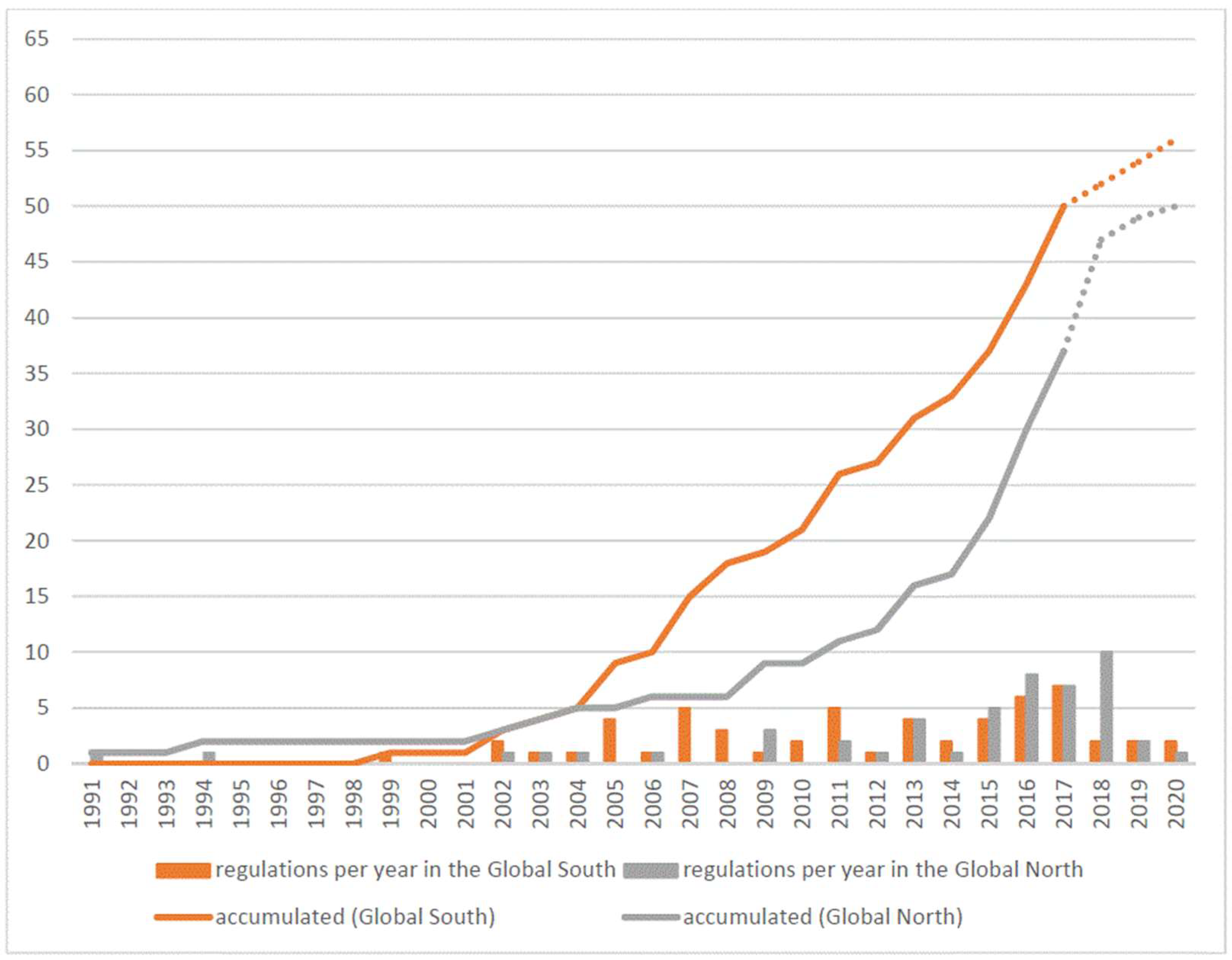
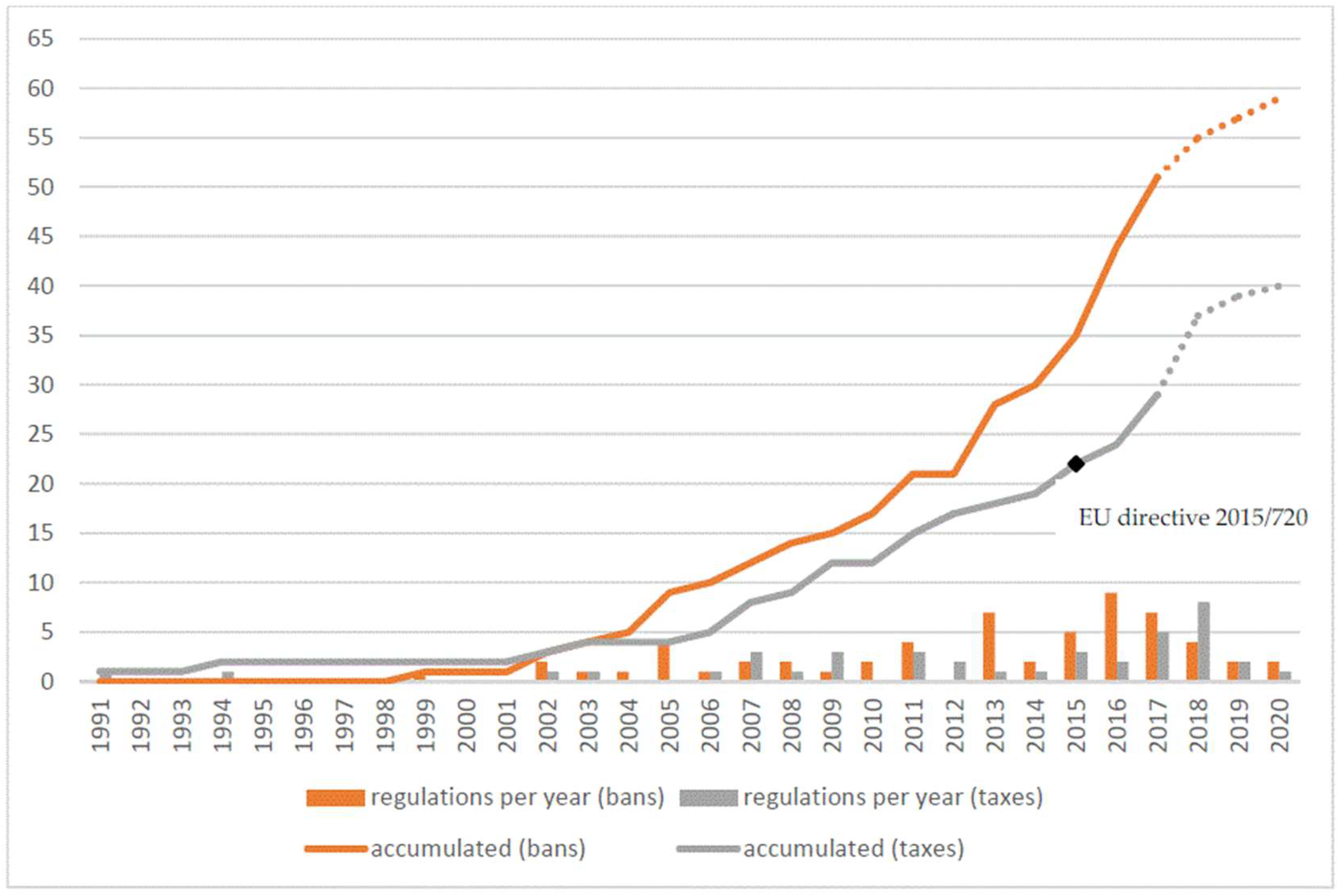
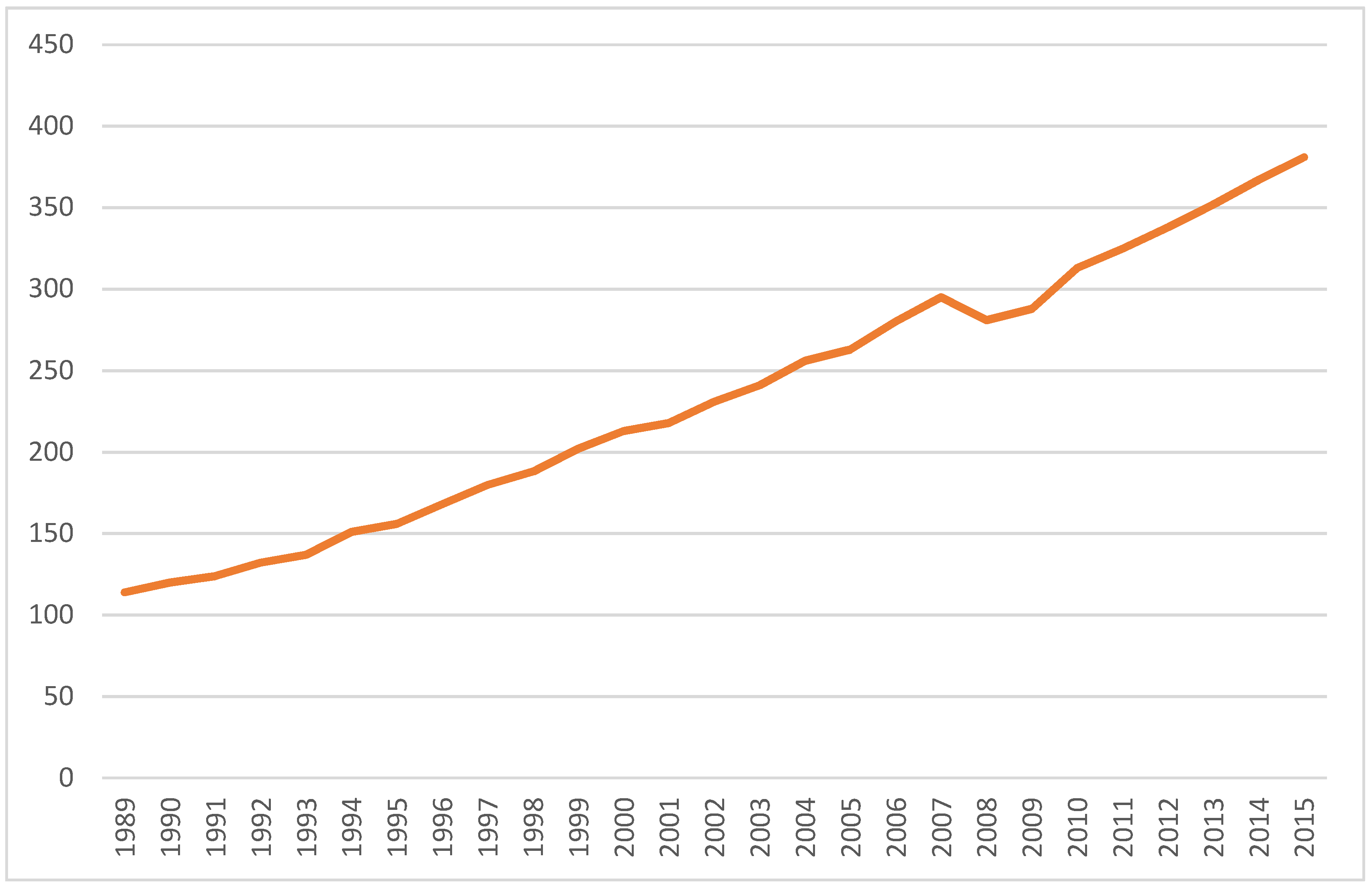
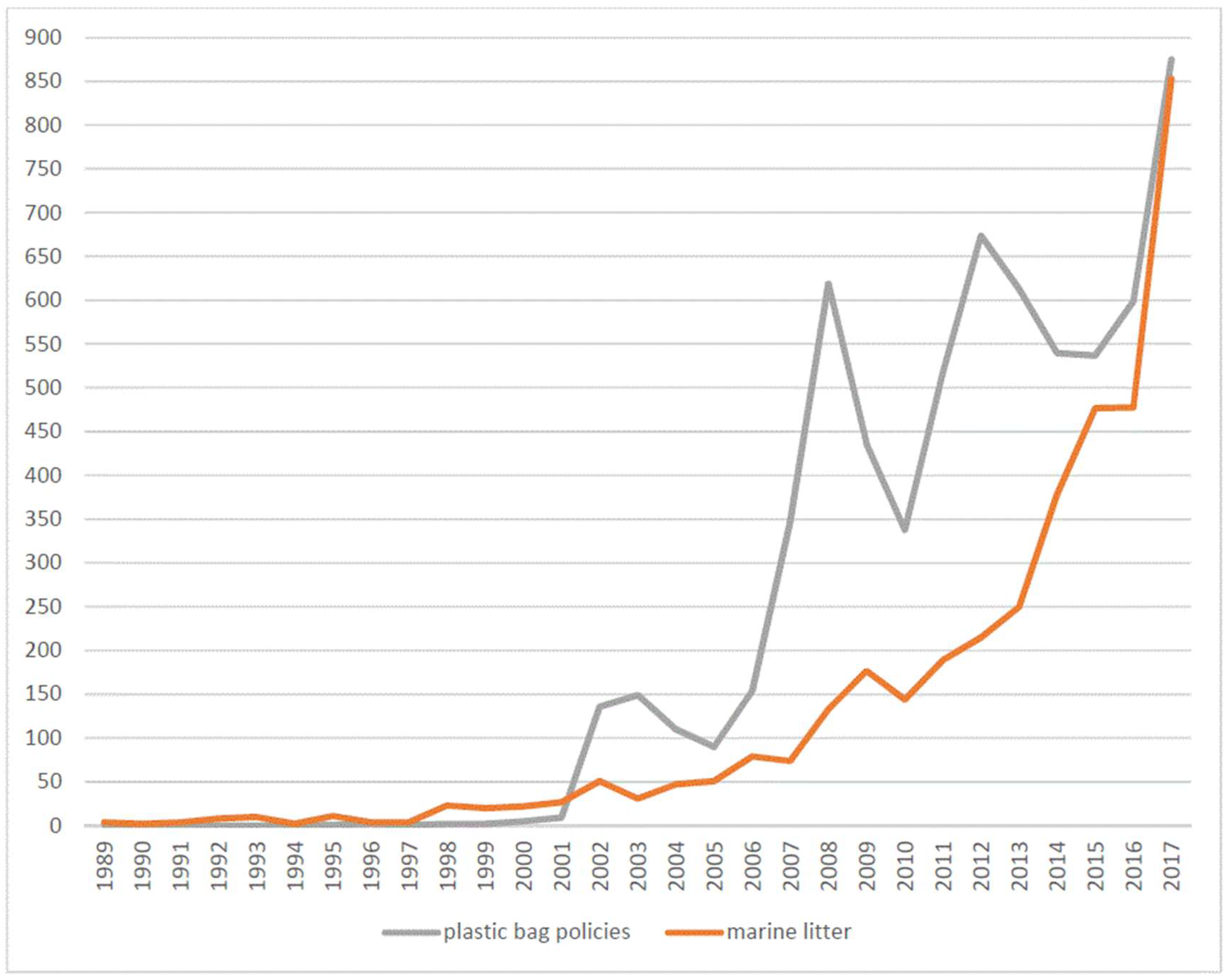
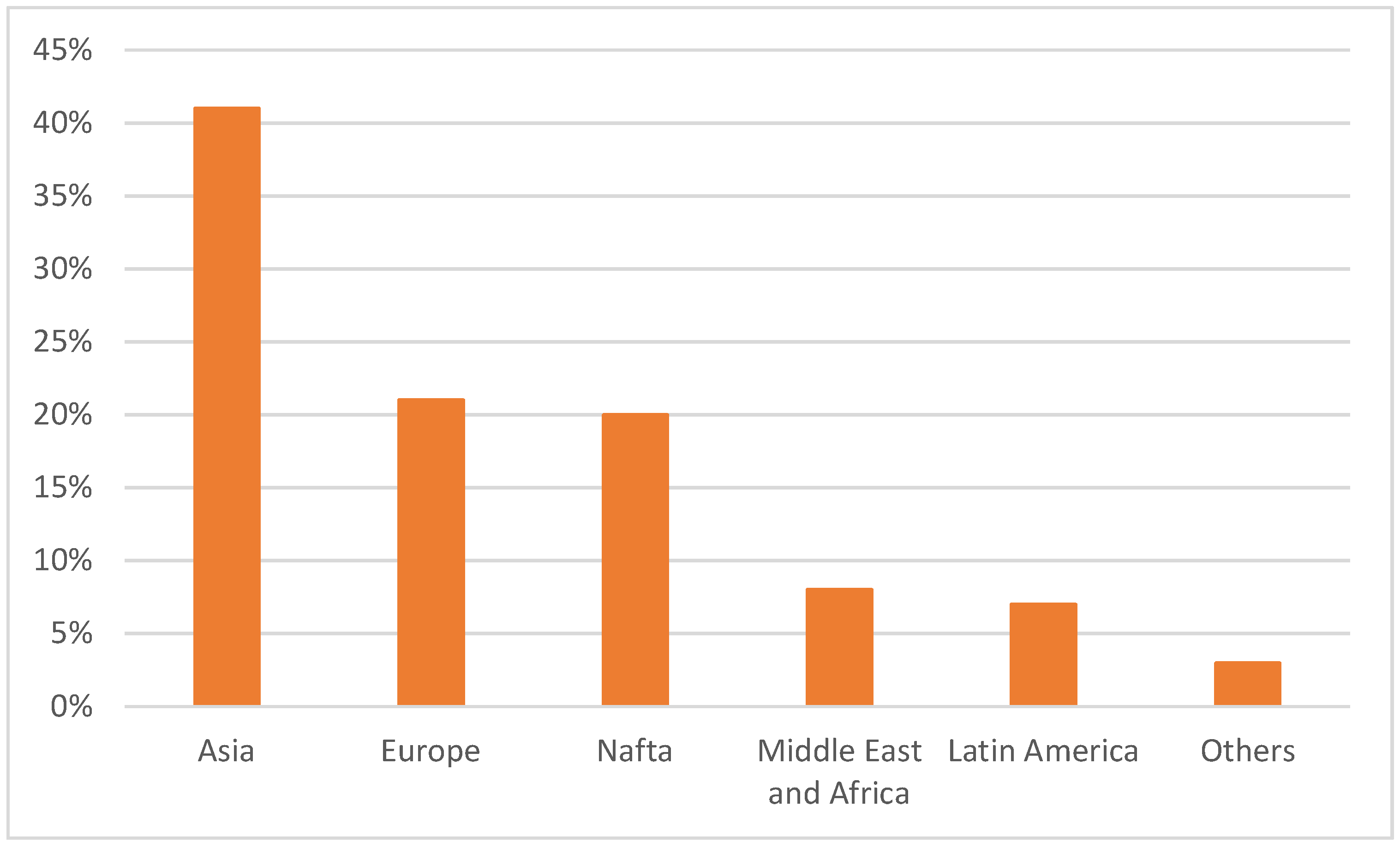
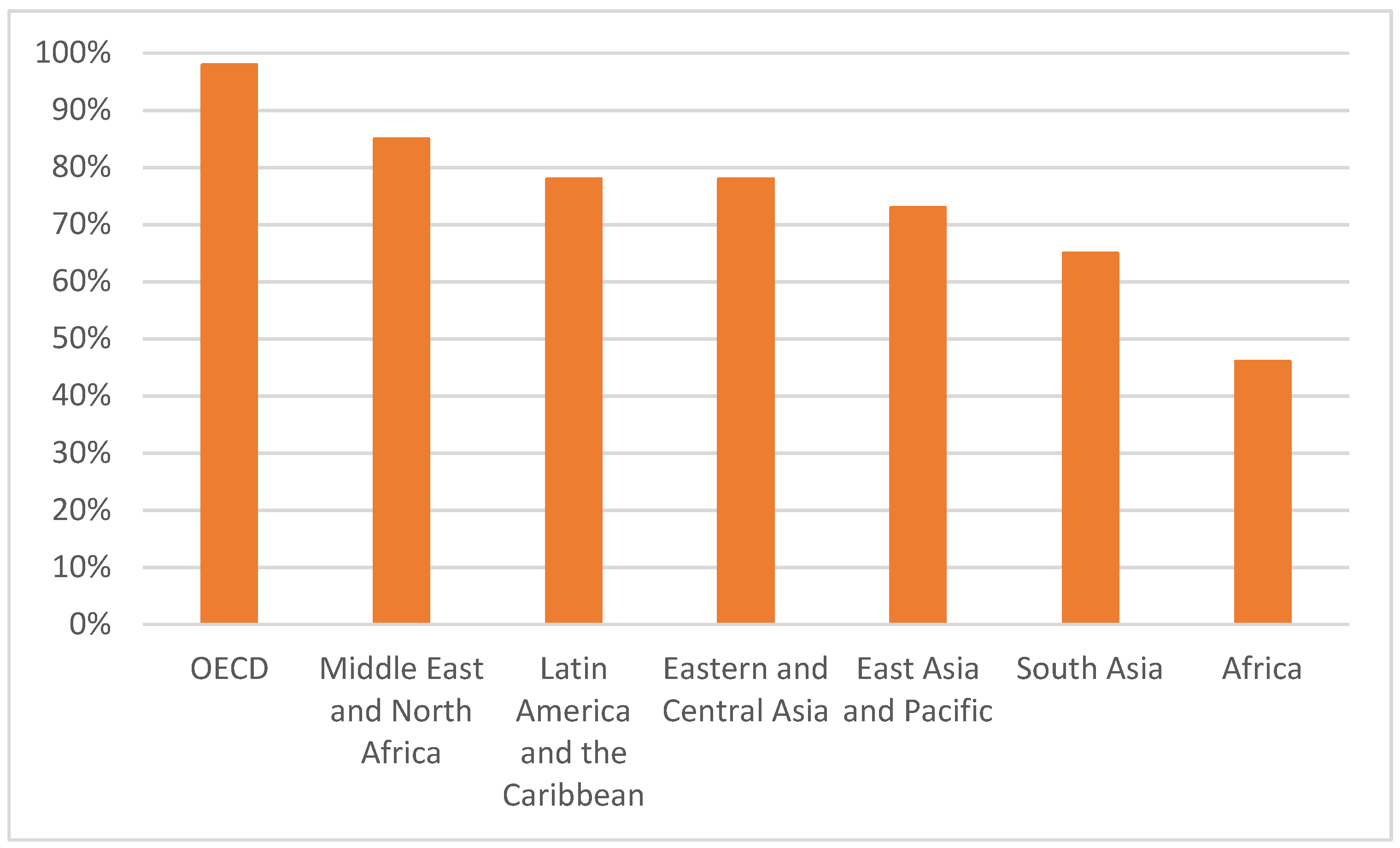
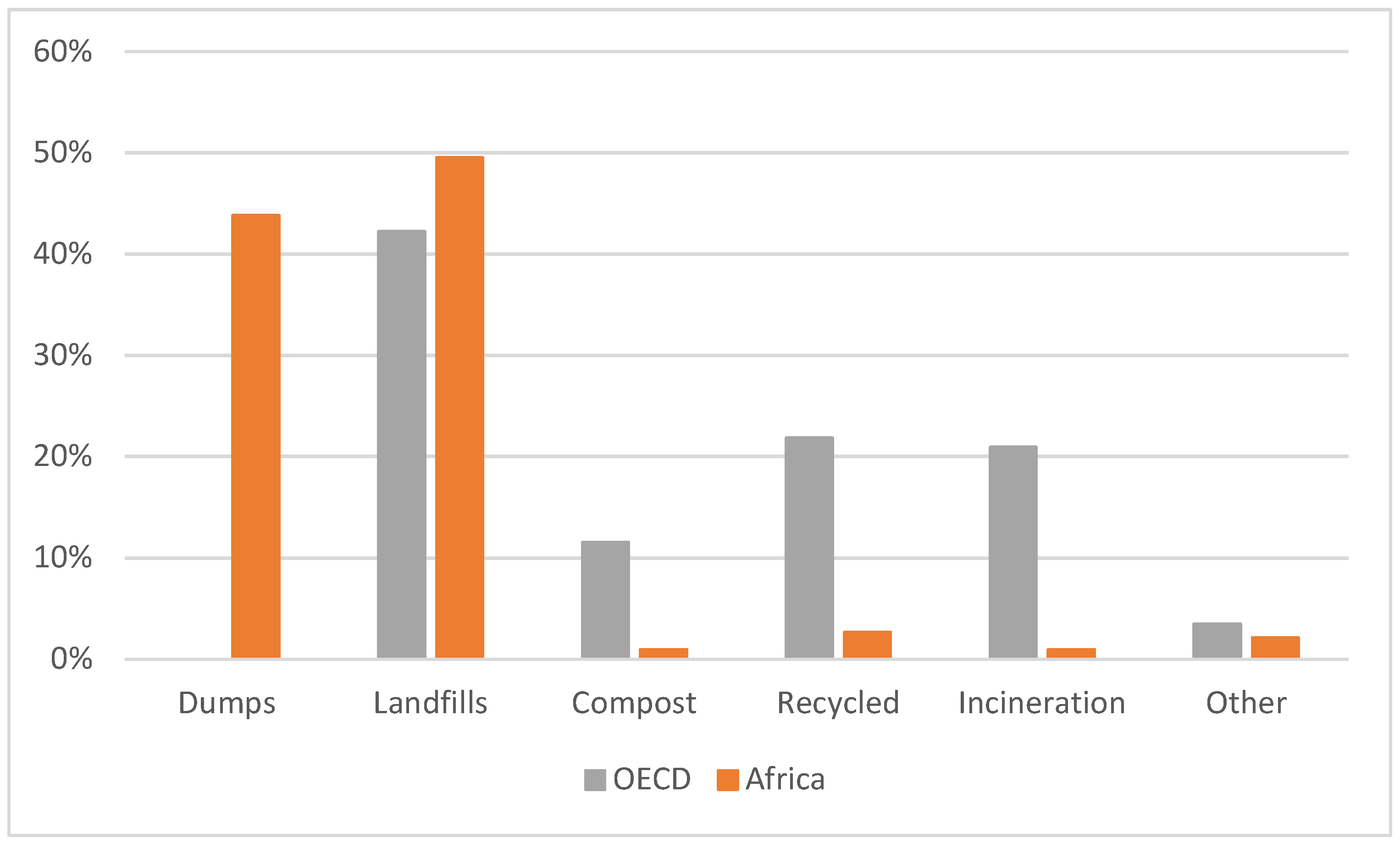
| Policy Transfer | Policy Diffusion | Policy Convergence | |
|---|---|---|---|
| Analytical focus | process | process | effects |
| Dependent Variable | transfer content transfer process | adoption pattern | similarity change |
| Level of Analysis | micro-level | macro-level | macro-level |
| English | German | French | Spanish | Portuguese | |
|---|---|---|---|---|---|
| Plastic bag policies | Plastic bag ban Plastic bag levy Plastic bag tax | Plastiktueten verbot Plastiktueten verbieten Plastiktueten kosten | Sac plastique interdit Sac plastique interdiction Sac plastique achat | Cobrar bolsa de plástico bolsa plástica Cobro obligatorio de bolsa de plástico bolsa plástica Prohibición de bolsa de plástico bolsa plástica Prohibir bolsa de plástico bolsa plástica | Taxa sobre os sacos de plástico os sacos plásticos as sacolas plásticas as sacolas de plástico Sacos de plásticos pagos sacos plásticos pagos sacolas plásticas pagas sacolas de plástico pagas Prohibição dos sacos de plástico dos sacos plásticos das sacolas plásticas das sacolas de plástico Proibir sacos de plástico sacos plásticos sacolas plásticas sacolas de plástico |
| Marine litter | Marine litter | Muell Meer Meeresmuell Abfall Meer | Déchets marins Déchets mer Détritus marins | Residuos marinos Basura marina Desechos marinos | Lixo marinho Detrito marinho |
© 2018 by the authors. Licensee MDPI, Basel, Switzerland. This article is an open access article distributed under the terms and conditions of the Creative Commons Attribution (CC BY) license (http://creativecommons.org/licenses/by/4.0/).
Share and Cite
Knoblauch, D.; Mederake, L.; Stein, U. Developing Countries in the Lead—What Drives the Diffusion of Plastic Bag Policies? Sustainability 2018, 10, 1994. https://doi.org/10.3390/su10061994
Knoblauch D, Mederake L, Stein U. Developing Countries in the Lead—What Drives the Diffusion of Plastic Bag Policies? Sustainability. 2018; 10(6):1994. https://doi.org/10.3390/su10061994
Chicago/Turabian StyleKnoblauch, Doris, Linda Mederake, and Ulf Stein. 2018. "Developing Countries in the Lead—What Drives the Diffusion of Plastic Bag Policies?" Sustainability 10, no. 6: 1994. https://doi.org/10.3390/su10061994
APA StyleKnoblauch, D., Mederake, L., & Stein, U. (2018). Developing Countries in the Lead—What Drives the Diffusion of Plastic Bag Policies? Sustainability, 10(6), 1994. https://doi.org/10.3390/su10061994




